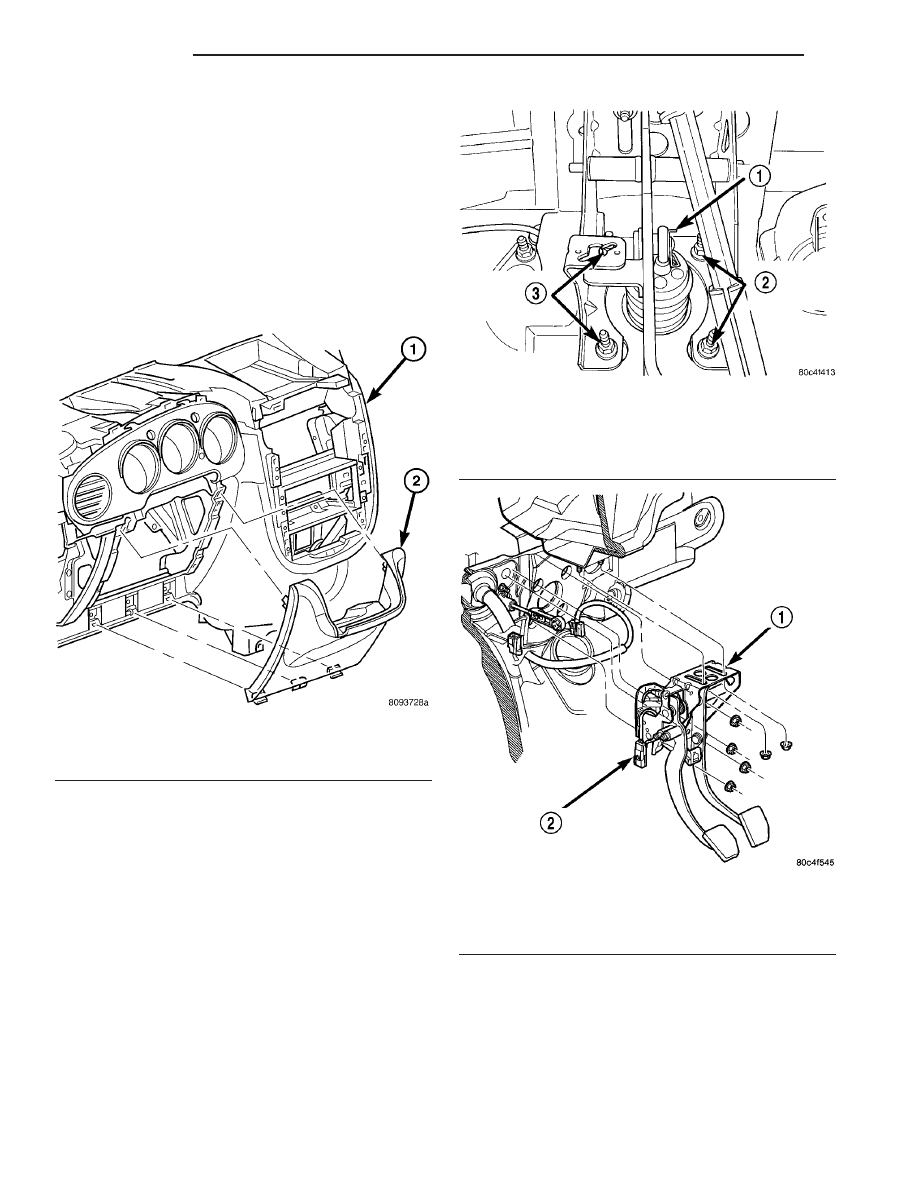Chrysler PT Cruiser. Manual - part 443

REMOVAL
REMOVAL - LHD
NOTE: Depending on vehicle build date, some vehi-
cles will not have the clutch pedal upstop switch
included in the switch assembly. These vehicles will
only utilize the starter inhibit (interlock) feature.
(1) Disconnect and isolate battery negative cable.
(2) Remove left lower instrument panel bezel (Fig.
22).
(3) Disconnect interlock switch and brake lamp
switch connectors.
(4) Disconnect clutch master cylinder rod from
clutch pedal pin. Inspect plastic retainer upon
removal. If retainer is damaged, it MUST be
replaced.
(5) Remove brake booster push rod retaining clip
from brake pedal. Disengage rod from pedal (Fig. 23).
(6) Remove two pedal assembly bracket to instru-
ment panel nuts (Fig. 24).
(7) Remove four brake booster/pedal bracket-to-
dash panel nuts (Fig. 24).
(8) From under the hood, pull brake master cylin-
der/booster far enough forward to obtain pedal to
bracket stud clearance.
(9) Remove the pedal bracket assembly (Fig. 24).
(10) Remove pedal pivot shaft and remove brake
and clutch pedals.
Fig. 22 Left Lower Instrument Panel Bezel
1 - INSTRUMENT PANEL
2 - INSTRUMENT PANEL STEERING COLUMN COVER
Fig. 23 Brake Booster Mounting Nuts and Rod
Retaining Clip
1 - CLIP
2 - BOOSTER MOUNTING NUTS
3 - BOOSTER MOUNTING NUTS
Fig. 24 Brake/Clutch Pedal Assembly Removal/
Installation
1 - CLUTCH/BRAKE PEDAL ASSEMBLY
2 - INTERLOCK/UPSTOP SWITCH CONNECTOR
6 - 16
CLUTCH
PT
CLUTCH INTERLOCK/UPSTOP SWITCH (Continued)